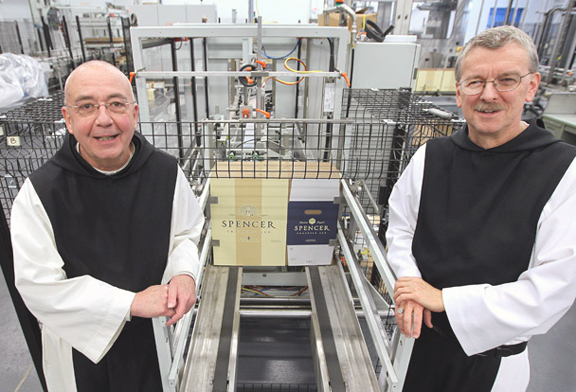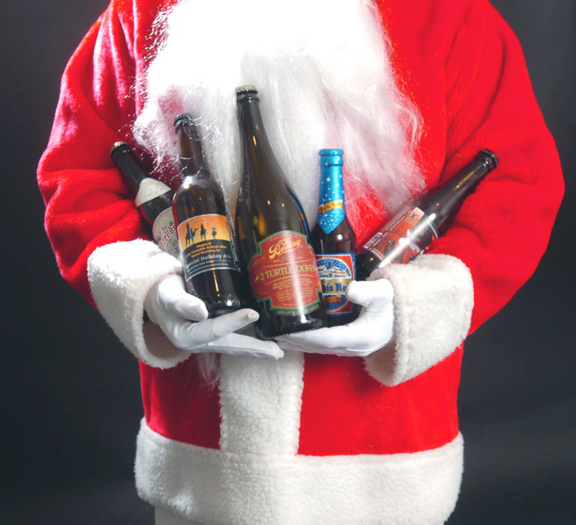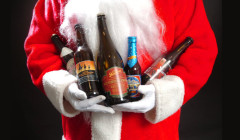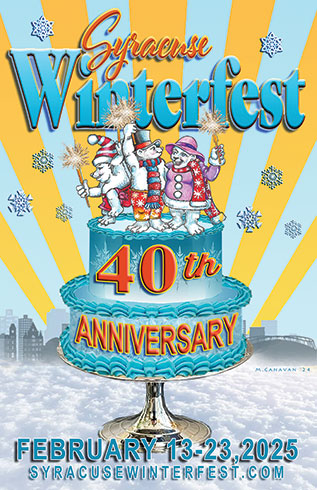Raise a Cup of Good Cheer!
There’s a reason that every season brewers crank out limited supplies of specialty beer —from autumn’s Oktoberfests and pumpkin beers to winter’s spicier, heavier ales.
The varieties of holiday chocolate or vanilla stouts, winter warmers or strong Belgian ales give you all the makings of a wonderful winter of beer. December 21st marks the official beginning of winter, but as we all know here Central New York, it arrives much earlier. In any case, the month of December is packed with many a celebration, be it Christmas, Chanukah, Kwanzaa, New Year’s Eve, or even Festivus for the rest of us. With so many local and craft brews to choose from, how it all started might help you decide.
Beer is one of the oldest drinks in the world, approximately 6,000 years old and said to have its beginnings in Mesopotamia, where women were primarily brewing this ancient libation. Revered in Egyptian society 5,000 years ago, beer was a magical drink that treated illnesses and was given a
s a gift to the pharaohs.
 Bishop Nikolaos of Myra, a Greek bishop in the fourth century in what is now Turkey is one of the patron saints of beer and brewing, along with Saint Wenceslas, Saint Brigid, and Gambrinus, King of Flanders. Gambrinus was reputed to have introduced the toast (of the clinking glasses variety, not the bread) and invented hopped malt beer. Not a true patron saint, Gambrinus is regarded as one by many a brewer and beer lover.
Bishop Nikolaos of Myra, a Greek bishop in the fourth century in what is now Turkey is one of the patron saints of beer and brewing, along with Saint Wenceslas, Saint Brigid, and Gambrinus, King of Flanders. Gambrinus was reputed to have introduced the toast (of the clinking glasses variety, not the bread) and invented hopped malt beer. Not a true patron saint, Gambrinus is regarded as one by many a brewer and beer lover.
It wasn’t until the rise of Christianity in Europe where the production of beer picked up.
Beer was brewed by monks in monasteries, hence the creation of the trappist beer. To this day this Middle Ages tradition still lives on in the Trappist abbeys. There are only eleven monasteries in the world that are recognized by the International Trappist Association. How do you know if you’re drinking a true Trappist beer? While a bottle of beer may have a rendering of a monk on its label, the only way to know is to look for the Authentic Trappist Product logo. Otherwise you’re drinking a trappist-style beer, which isn’t a bad thing, but it’s always good to know what’s authentic and what’s not. Who wouldn’t love beers from breweries whose profits go to assisting others? Not one euro or dollar is made to pocket —only for the continuation of brewing ingredients and supplies and to charities.
Remember good old Santa Claus, Kris Kringle, or St. Nick? Well, the very same Saint Nikolaos of Myra was the inspiration for what would morph into the tradition of Santa Claus whose evolution took shape in the 19th century. Saint Nicholas (St. Nick for short) was known for secretly giving gifts back in the 4th century. He is revered by the Catholic and Orthodox Christian faiths and honored in some Anglican and Lutheran churches. Saint Nicholas Day occurs every December 6th, a day still celebrat ed in European countries such as Germany, the Netherlands, and Belgium. In other cultures he is frequently depicted as having a beer in hand, a concept that might seem contradictory and blasphemous to other cultures. Imagine the idea of a jolly white bearded man dressed in red, riding on a sleigh, sliding down a chimney and giving gifts to the good children of the world —with a glass beer in his hand! In this day and age, would he be cited for drinking and flying on a sleigh? Is that big tummy really a beer belly and not due to all the cookies left for him in one evening? We may never know.
ed in European countries such as Germany, the Netherlands, and Belgium. In other cultures he is frequently depicted as having a beer in hand, a concept that might seem contradictory and blasphemous to other cultures. Imagine the idea of a jolly white bearded man dressed in red, riding on a sleigh, sliding down a chimney and giving gifts to the good children of the world —with a glass beer in his hand! In this day and age, would he be cited for drinking and flying on a sleigh? Is that big tummy really a beer belly and not due to all the cookies left for him in one evening? We may never know.
Schmaltz Brewing Company (located in Clifton Park, NY) is a craft brewery established in California that started out as a Chanukah ‘experiment’ in 1996 is has gained notoriety by winning awards and rated as a top-100 brewery by beer magazines and websites. They give their beers witty names like “Messiah Bold,” “Genesis Ale,” “Jewbelation” to name a few. Their beers are kosher and include ingredients such as figs, dates, and pomegranate —fruits drenched in Jewish symbolism. The seasonal beers change based on the barley and hop harvests in the fall, and Rosh Hashanah, the new year of Jewish tradition.
As we look at the history of beer and its connections to faith, you don’t have to ascribe to any religion to enjoy a delicious glass of a Belgian dubbel, tripel or an imperial amber ale made with pomegranate juice. You don’t have to believe in any
thing except the wonderful concoction right in front of your very eyes. If you aren’t sure which kind to choose, go to one of the many local beer stores and you’ll be guided to the right taste for you.
Alas, another year draws to an end. The month of December tends to be one not only of celebration and tradition, but one of reflection of this ending year. So in the historic tradition from the King of Beer himself, Gambrinus, let’s raise a glass of beer and toast to health, wealth, and hoppiness! Cheers!










